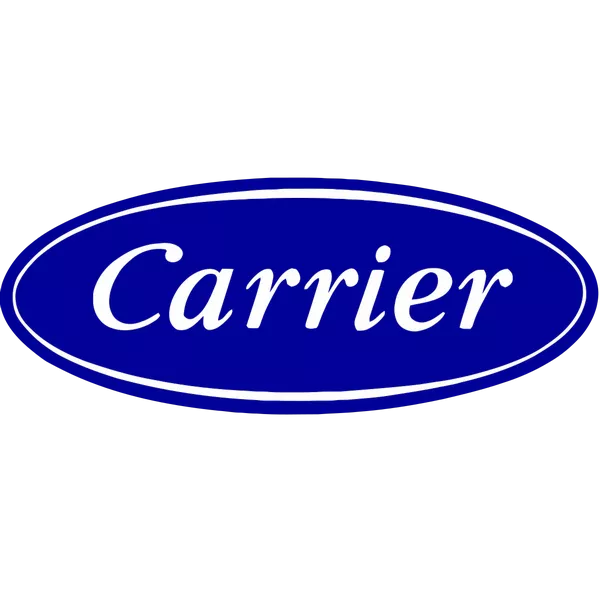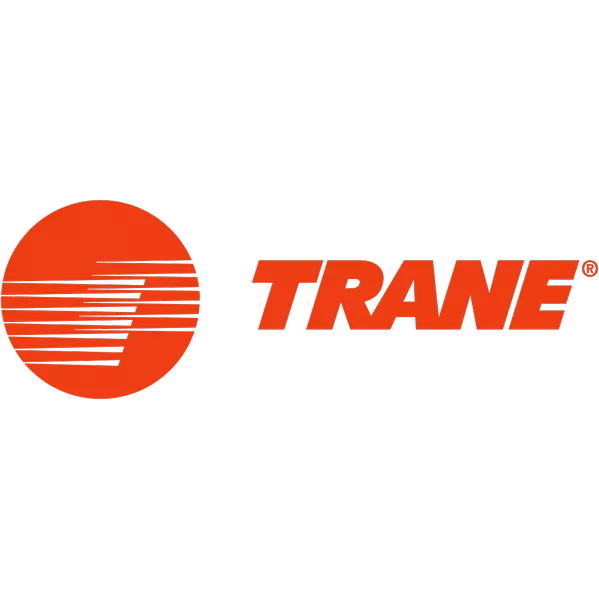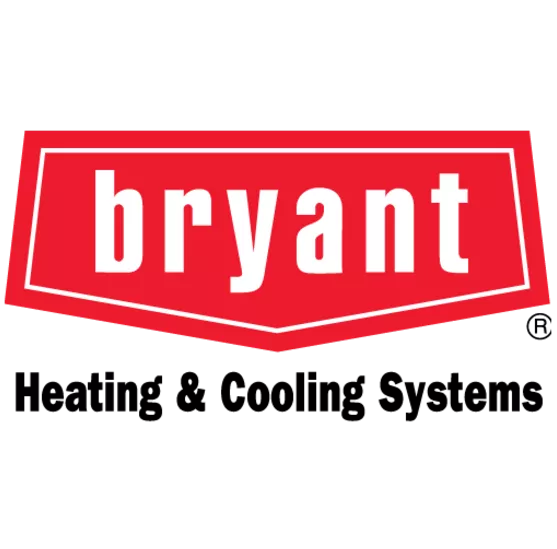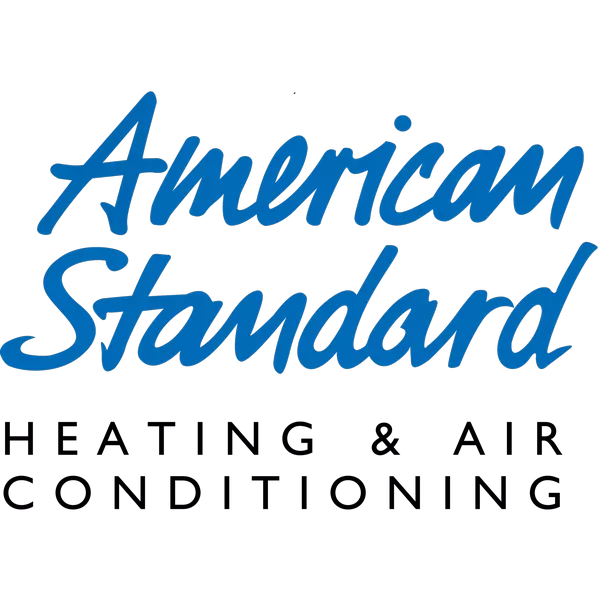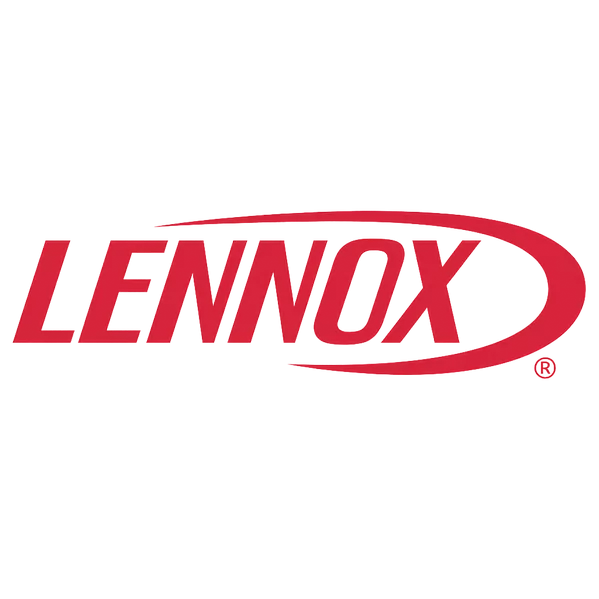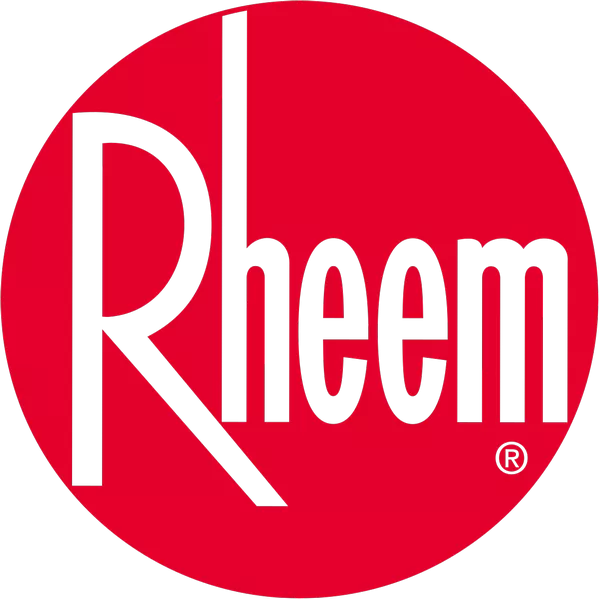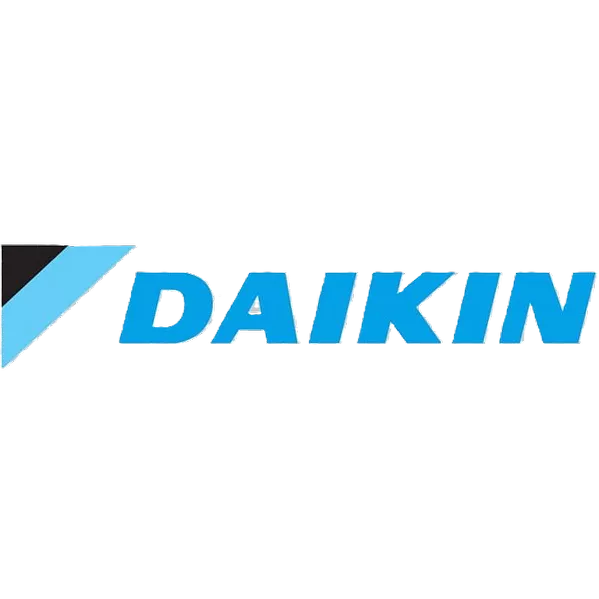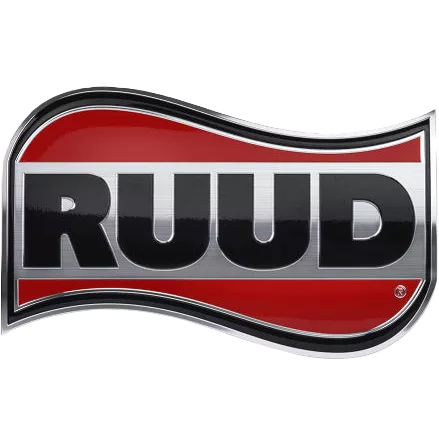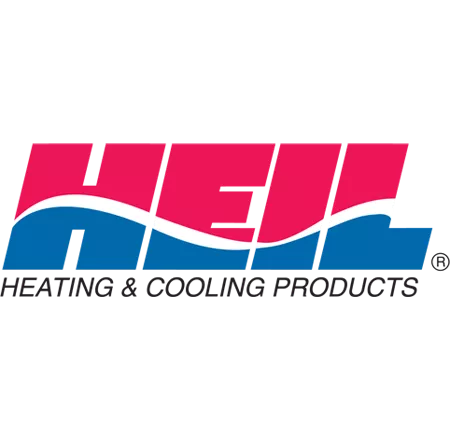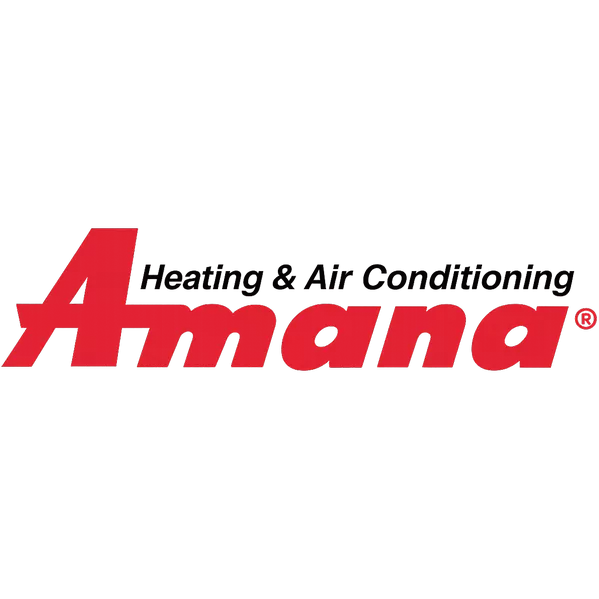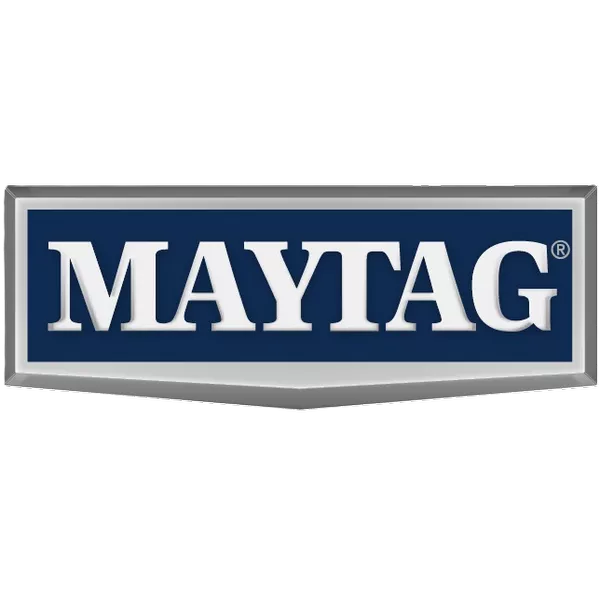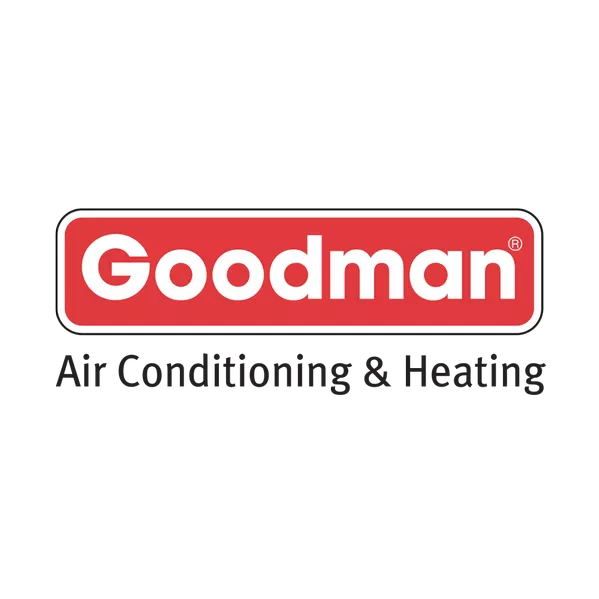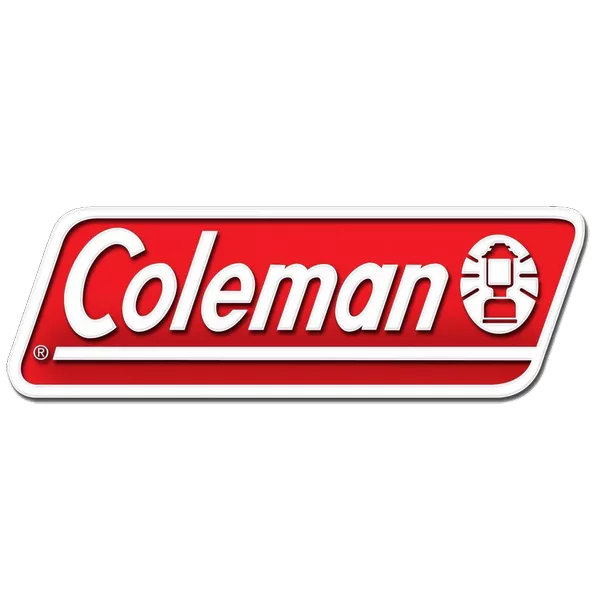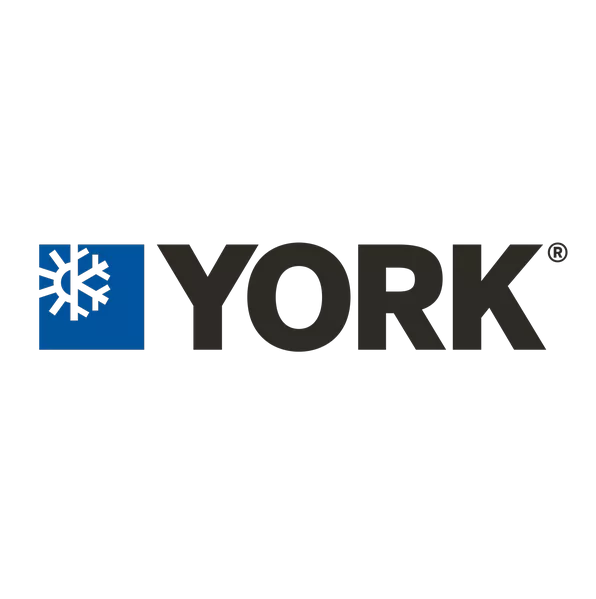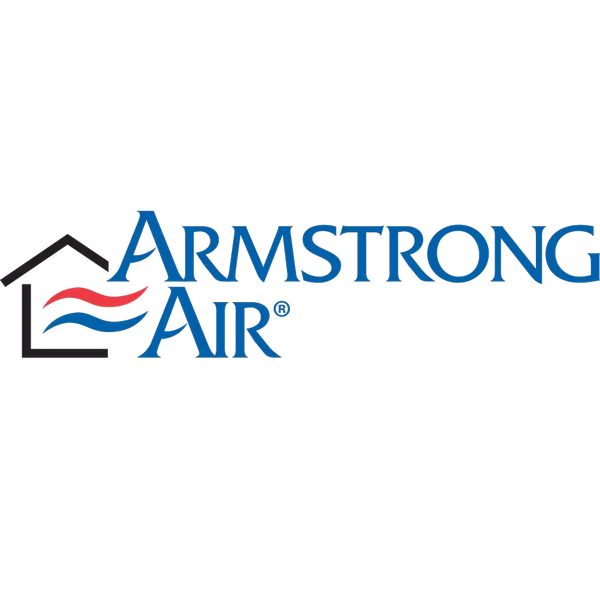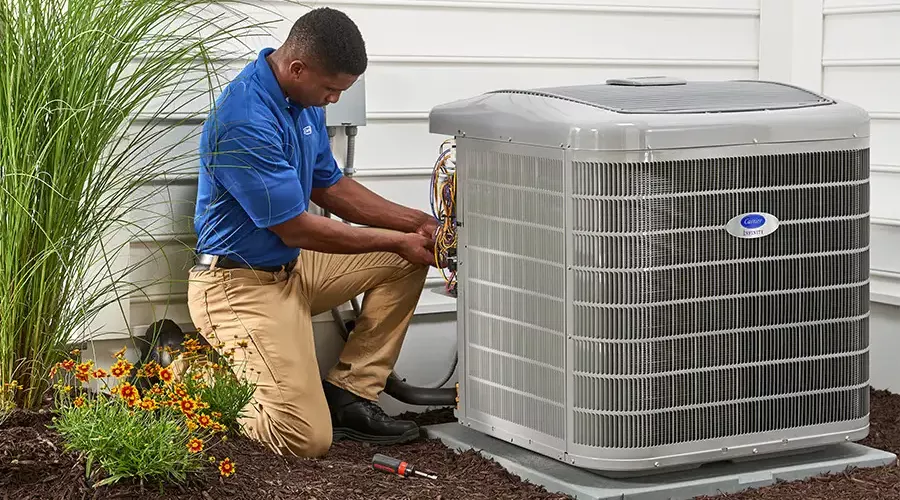Top HVAC Brands
Here's what we recommend for:
Product Selection
4.8/5
Carrier’s range is broad and well-balanced across the three core residential ducted categories. In this review, I’ve focused on their most advanced options - the 59MN7 gas furnace, the 24VNA6 air conditioner, and the 25VNA4 heat pump - but the brand also offers mid-tier and entry-level models for homeowners who don’t need every high-end feature. The furnace lineup spans from basic 80% AFUE models to the nearly 99% efficient Infinity®...
Customer Support & Warranty
4.7/5
Carrier offers a competitive 10-year parts limited warranty on registered equipment and a lifetime heat exchanger warranty for certain furnace models like the 59MN7. Warranty registration is simple, but it must be completed within the specified time after installation. From what I’ve seen, Carrier’s support network is reliable, but it depends heavily on the quality of the local dealer. Customers who choose established, well-reviewed Carrier dealers tend to experience faster...
Energy Efficiency
4.9/5
Carrier’s Infinity® series leads the pack in real-world efficiency. The 59MN7 furnace reaches up to 98.5% AFUE, meaning almost all the gas burned is converted to usable heat. The 24VNA6 AC and 25VNA4 heat pump boast some of the highest SEER2 ratings in the industry. In my follow-ups with homeowners after installation, it’s common to hear about double-digit percentage drops in monthly energy bills during peak summer and winter seasons....
Smart Features & Connectivity
4.8/5
The Infinity® Touch Control is the centerpiece of Carrier’s smart ecosystem. It goes far beyond standard thermostat functions by offering full control over temperature, humidity, ventilation, and indoor air quality from a single interface. The menus are intuitive enough that homeowners quickly learn to set schedules, adjust fan speeds, or activate specific comfort modes without calling for help. In my own installations, the remote access via the Carrier app has...

Price Snapshot: Mid-to-premium; usually pricier than value brands, below ultra-luxury tiers.

Product Focus: Full lineup across Furnace, Central AC, and Air-Source Heat Pump (strong inverter options).

Best For: Buyers who want very even temperatures and low noise with brand-name dealer support.

What Stands Out: Polished smart thermostat ecosystem that works tightly with variable-speed systems.

Before You Buy: Match the series to climate (consider cold-climate heat pump models where winters are harsh).

Warranty/Dealer: Broad U.S. dealer network; parts coverage is solid; confirm labor options with your installer.
Product Selection
4.8/5
For this review, I’ve centered on three flagship models - the S9V2-VS gas furnace, XV20i air conditioner, and XV20i heat pump - but Trane’s lineup extends across multiple performance tiers. Their gas furnace range runs from cost-effective single-stage models to ultra-efficient variable-speed designs. In central AC, they offer options from basic 14.3 SEER2 systems up to the premium XV20i with TruComfort™ modulation. The heat pump range is equally broad, with models...
Customer Support & Warranty
4.4/5
Trane’s flagship systems are priced toward the premium end of the market, reflecting their build quality, efficiency, and long-term reliability. For customers prioritizing durability and stable comfort over the lowest upfront price, the investment often pays off over the lifespan of the unit. For those on tighter budgets, Trane’s single-stage ACs and furnaces still deliver respectable performance and share much of the same design DNA as their higher-end counterparts. However,...
Energy Efficiency
4.8/5
Efficiency is one of Trane’s strengths, especially in its flagship models. The S9V2-VS furnace reaches up to 97% AFUE, while the XV20i AC and heat pump models carry SEER2 ratings at the top of the residential market. In homes where I’ve replaced older systems with these units, homeowners often see noticeable drops in seasonal energy costs within the first year. The TruComfort™ system’s ability to run at lower speeds for...
Smart Features & Connectivity
4.6/5
Trane’s ComfortLink™ II smart thermostat is the main interface for its high-end systems, and while it’s not quite as flashy as some competitors’ touchscreens, it’s built for stability and ease of use. The system allows you to monitor and control temperature, humidity, and even certain diagnostics remotely via the Trane Home app. In my field experience, homeowners appreciate that the interface is straightforward - you don’t need to be a...

Price Snapshot: Premium; you often pay more for build and acoustics.

Product Focus: Strong across categories, with emphasis on quiet, durable inverter AC/Heat Pumps; efficient gas furnaces.

Best For: Noise-sensitive spaces and “buy-it-once” homeowners who value longevity.

What Stands Out: Robust cabinets, refined compressor control, and a mature communicating platform.

Before You Buy: Pair with the recommended thermostat and use an authorized installer to unlock full performance.

Warranty/Dealer: Well-established dealer network; confirm labor coverage and any registration deadlines.
Product Selection
4.7/5
Bryant offers a broad lineup across the main residential ducted categories, making it possible to match the system to the specific needs of the home. For this review, I focused on three of their most advanced models in each category - the 987M furnace for heating, the 191VAN AC for cooling, and the 284ANV heat pump for all-season performance. These models represent the top of the line, but Bryant also...
Customer Support & Warranty
4.6/5
Bryant offers competitive warranties on its premium equipment - typically 10 years for parts and a lifetime limited warranty on heat exchangers for the 987M furnace. Warranty registration is straightforward if completed within the required time frame. From my perspective, the company is consistent in honoring claims, provided the system has been maintained according to guidelines. Customers have told me that response times for authorized service calls are generally quick,...
Energy Efficiency
4.8/5
While lab ratings like 98.3% AFUE for the 987M and high SEER2 values for the 191VAN and 284ANV are impressive, I always focus on how these efficiencies translate into actual energy savings for homeowners. In practice, the modulating furnace burns less gas by running steadily at lower capacity, rather than cycling on and off at full fire. This reduces wasted energy and wear on the system. The variable-speed cooling and...
Smart Features & Connectivity
4.6/5
Bryant’s premium line integrates seamlessly with the Evolution Connex™ control, which is more than just a thermostat. It allows homeowners to fine-tune temperature, humidity, ventilation, and even air quality settings from a single interface. In my testing, the touchscreen interface is responsive and logically laid out, so you do not have to dig through endless menus to adjust settings. Wi-Fi connectivity enables remote control via the Bryant mobile app, which...

Price Snapshot: Mid-range and value-leaning versus peer premium brands.

Product Focus: Well-rounded in Furnace/AC/Heat Pump; Evolution-class options hit a sweet spot of features vs. cost.

Best For: Homeowners wanting premium-style comfort without a top-shelf price.

What Stands Out: Feature-to-price balance (quiet operation, smart controls, solid efficiency).

Before You Buy: Prioritize a quality installation; communicating controls work best with trained dealers.

Warranty/Dealer: Good coverage and availability; register on time and ask about transferable terms.
Product Selection
4.7/5
American Standard’s residential ducted catalog is organized into Platinum, Gold, and Silver tiers across furnaces, central AC, and air-source heat pumps. The Platinum 20 AC and heat pump deliver fine-grain modulation for homes that want the quietest, most stable comfort, while Gold tier units, like the S9V2 furnace, emphasize steady performance and strong efficiency without every premium extra. Silver models offer simpler staging for tighter budgets. Capacities span small homes...
Customer Support & Warranty
4.6/5
Registered systems carry competitive coverage - typically 10-year limited parts and strong heat exchanger terms on the gas furnace line. Registration is quick and the process is straightforward for dealers. In practice, claim handling has been consistent when maintenance records exist and installation standards were met. Homeowners I follow up with report prompt scheduling and clear communication from established local dealers, which fits the brand’s reputation for low-friction ownership. Warranty...
Energy Efficiency
4.7/5
Across the product line, American Standard leans heavily into efficiency ratings that compete with top brands. Their Platinum series units boast SEER2 ratings up to 21 and furnaces hitting the mid-to-upper 90s in AFUE. More importantly, the efficiency isn’t just numbers on paper – in real-world installations, the modulation and variable-speed technology actively trim utility costs. I’ve had clients share utility bill comparisons where moving from a 15-year-old single-stage AC...
Smart Features & Connectivity
4.6/5
American Standard’s connected backbone is the AccuLink platform paired with the Platinum-series controls. The wall control is simple to navigate, schedules are easy to set, and homeowners can adjust temperature, fan circulation, and comfort modes from the app without a learning curve. Zoning integrates cleanly, so upstairs and downstairs setpoints can be managed independently, which helps in multi-level homes where stratification is common. Diagnostics exposed through the control shorten service...

Price Snapshot: Upper mid-range; often a touch more affordable than top-tier premium lines.

Product Focus: Balanced Furnace/AC/Heat Pump portfolio with quiet, efficient inverter choices.

Best For: Families wanting steady comfort and low noise without going all-in on flagship pricing.

What Stands Out: Comfort-first tuning and straightforward smart control options.

Before You Buy: Ensure proper Manual J/S/D sizing and commissioning; performance depends on set-up.

Warranty/Dealer: Competitive warranties; lean on local authorized dealers for parts and service speed.
Product Selection
4.5/5
Lennox maintains a wide portfolio across the three categories we’re focusing on: furnaces, central air conditioners, and air-source heat pumps. The SLP99V Gas Furnace represents the pinnacle of their heating lineup, while the SL28XCV Air Conditioner is currently their flagship cooling system. The XP25 Heat Pump bridges the gap for homeowners seeking year-round efficiency. Beyond these, Lennox offers tiered product lines – Merit, Elite, and Signature Collection – giving options...
Customer Support & Warranty
4/5
Warranty coverage is strong but with caveats. Lennox offers 10 years on parts and up to 20 years or lifetime on heat exchangers, depending on the furnace model. However, registration within a set timeframe is mandatory to secure these terms, and many homeowners overlook this step. Feedback from users is split: some praise responsive dealer-backed support, while others feel Lennox’s corporate line is less accessible compared to brands like Goodman...
Energy Efficiency
4.9/5
Efficiency is where Lennox has long marketed itself, and the numbers are impressive. Across its lineup, Lennox pushes for top-tier ENERGY STAR® certification and delivers advanced features like solar-ready AC units. The XP25 Heat Pump, for instance, offers up to 23.5 SEER2 and 10.2 HSPF2, making it one of the strongest dual-purpose systems for homeowners in moderate climates. I’ve seen energy bills drop noticeably after a Lennox installation, especially when...
Smart Features & Connectivity
4.7/5
Lennox has heavily invested in smart home integration. The flagship iComfort® S30 Ultra Smart Thermostat is more than just a controller – it actively monitors indoor and outdoor conditions, adjusts fan speeds, and even predicts energy demand based on weather forecasts. I’ve tested it with zoning systems, and the precision it offers is impressive, especially for large multi-level homes. Users I’ve spoken with often say the app experience is smooth,...

Price Snapshot: Premium to ultra-premium; among the priciest in residential HVAC.

Product Focus: Standout AC/Heat Pump efficiency and high-AFUE furnaces; very quiet flagships.

Best For: Efficiency-first and noise-sensitive buyers who want top-tier comfort.

What Stands Out: Polished inverter systems and refined smart controls (very even temps, low noise).

Before You Buy: Match the right series to climate; proprietary controls work best with trained dealers.

Warranty/Dealer: Competitive parts coverage; strong dealer network; confirm labor options and registration.
Product Selection
4.5/5
Rheem’s lineup is organized into three tiers – Value, Classic, and Prestige. This makes it easier for homeowners to choose between budget, mid-range, and premium options. Within the Prestige category, you’ll find the RA19 Air Conditioner, RP19 Heat Pump, and R98V Furnace, each designed with high efficiency and durability in mind. For buyers, the clarity of this product ladder is refreshing – unlike brands with overwhelming lineups, Rheem makes it...
Customer Support & Warranty
4.4/5
Rheem backs its Prestige models with a 10-year limited parts warranty and a limited lifetime heat exchanger warranty for furnaces. From my own experience and homeowner feedback, Rheem’s warranty claims process is fairly smooth, though as with most HVAC brands, it depends heavily on dealer support. Many customers told me that their local Rheem-certified contractors handled warranty claims quickly, minimizing downtime. However, I’ve also come across reports where smaller dealers...
Energy Efficiency
4.6/5
Across the Prestige RA19, RP19, and R98V, Rheem demonstrates a solid focus on efficiency. The AC and heat pump are both ENERGY STAR® certified, and the furnace’s 98% AFUE puts it among the highest in its category. In my testing, the EcoNet controls were particularly helpful in optimizing efficiency – allowing systems to shift into eco modes during mild weather. Users I’ve interviewed often report long-term utility bill savings, though...
Smart Features & Connectivity
4.3/5
One of Rheem’s biggest selling points is the EcoNet® Smart Thermostat, which ties together the furnace, AC, and heat pump into a unified system. In real-world use, EcoNet allows homeowners to fine-tune humidity, fan speeds, and energy-saving modes with ease. I’ve set up several installs where customers were impressed by how clearly the app displayed performance metrics, filter reminders, and even diagnostic codes for technicians. Unlike some brands that lean...

Price Snapshot: Mid-range with strong value for features.

Product Focus: Balanced Furnace/AC/Heat Pump lineup; solid inverter choices for homes of all sizes.

Best For: Homeowners wanting a feature-rich, practical system without premium pricing.

What Stands Out: User-friendly app/controls and broad availability through Pro Partner dealers.

Before You Buy: Ensure proper commissioning (charge/airflow) to hit the published comfort and noise targets.

Warranty/Dealer: Good warranties and wide U.S. footprint; ask dealer about optional labor coverage.
Product Selection
4.4/5
Daikin offers a wide global catalog, but in the U.S. residential ducted market, its portfolio is streamlined to focus on high-efficiency gas furnaces, air conditioners, and heat pumps. The DM97MC furnace, DX9VC AC, and DZ9VC heat pump represent the top end, while the lineup also includes more affordable two-stage and single-stage models under the same family. Compared to Carrier or Lennox, Daikin’s U.S. ducted lineup is slightly smaller in scope,...
Customer Support & Warranty
4.6/5
Daikin sets itself apart with longer warranties than the industry norm. Most flagship products include a 12-year parts limited warranty, and in many cases, a 12-year unit replacement warranty on major failures like compressors or heat exchangers. This puts it ahead of brands offering only 10 years. Homeowners I’ve worked with appreciate the peace of mind this provides. Warranty service is generally smooth through Daikin Comfort Pros, though in some...
Energy Efficiency
4.7/5
Efficiency is where Daikin shines, thanks to its global expertise in inverter technology. The DX9VC and DZ9VC both leverage variable-speed compressors to achieve up to 19 SEER2 ratings, and the DM97MC furnace tops out at nearly 98% AFUE. This places Daikin firmly in the premium efficiency tier, though not at the extreme top-end of the market. In real-world installs, homeowners I’ve worked with typically report 20–30% drops in seasonal energy...
Smart Features & Connectivity
4.5/5
Daikin places a strong emphasis on smart controls, and it shows. The ComfortNet™ communicating system allows the DM97MC furnace, DX9VC AC, and DZ9VC heat pump to coordinate seamlessly, adjusting fan speeds, compressor stages, and airflow automatically based on real-time conditions. Homeowners can monitor performance, set schedules, and receive alerts via the Daikin One+ Smart Thermostat, which is one of the more polished control systems I’ve worked with. The Daikin One+...

Price Snapshot: Mid to premium, depending on series and features.

Product Focus: Strong in Air-Source Heat Pumps and inverter tech; also offers furnaces and central AC.

Best For: All-electric or efficiency-focused homes that want variable-speed comfort and low noise.

What Stands Out: Mature inverter platforms, quiet outdoor units, and broad heat-pump expertise (including cold-climate lines).

Before You Buy: Use an installer experienced with inverter commissioning; check refrigerant platform and local code requirements.

Warranty/Dealer: Global brand with a growing U.S. network; verify local parts/service access and labor coverage.
Product Selection
4.2/5
Ruud’s catalog isn’t as sprawling as Carrier or Lennox, but the Endeavor Prestige Line covers the essentials: high-efficiency gas furnaces like the U98MV, smart inverter-driven air conditioners like the UA19AY, and versatile heat pumps such as the UP19AY. The brand also offers mid-tier Achiever series units for those who don’t need maximum efficiency. The selection is well-rounded enough for most residential installs, though Ruud lacks some of the ultra-niche, specialty...
Customer Support & Warranty
4.4/5
Ruud offers a 10-year parts warranty and a limited lifetime heat exchanger warranty on the U98MV, along with a conditional unit replacement guarantee if registered promptly. Customers I’ve spoken with note that the warranty coverage is competitive, though not as aggressively extended as some premium brands like Amana (with its lifetime unit replacement promise). The actual support experience tends to vary by local dealer—something true for nearly all HVAC brands....
Energy Efficiency
4.6/5
Between the UA19AY’s 19 SEER2 rating, the UP19AY’s inverter-driven heat pump, and the U98MV’s 98% AFUE, Ruud checks nearly every box for energy-conscious homeowners. EcoNet® plays a role here too, automatically adjusting output levels to avoid wasteful overcooling or overheating. Customers I’ve spoken with often highlight reduced utility bills within the first year of use compared to their previous mid-efficiency systems. Still, while Ruud delivers excellent efficiency, it doesn’t chase...
Smart Features & Connectivity
4.5/5
Ruud’s EcoNet® Smart Thermostat is the centerpiece of its connected ecosystem, linking the U98MV furnace, UA19AY air conditioner, and UP19AY heat pump into a unified platform. Homeowners can control settings remotely via smartphone, monitor energy use, and even receive service alerts when the system senses a fault. The diagnostic codes are particularly handy for technicians, cutting down troubleshooting time during service calls. Compared to competitors, EcoNet doesn’t feel as slick...

Price Snapshot: Value-leaning mid-range; often a bit cheaper than comparable rivals.

Product Focus: Straightforward Furnace/AC/Heat Pump options for replacements and budget projects.

Best For: Cost-conscious buyers who still want reliable, modern equipment.

What Stands Out: Clear, no-frills lineup that mirrors Rheem engineering with simpler trims.

Before You Buy: Compare series names/features carefully; pick the inverter tier if noise/evenness matter.

Warranty/Dealer: Solid parts coverage via broad dealer network; confirm labor plan availability.
Product Selection
4.2/5
Heil organizes its lineup into two tiers: the premium Ion series and the more value-oriented Performance series. The Ion 98 furnace, Ion 21 AC, and Ion HVH8 heat pump are the flagships, offering full variable-capacity and smart controls. The Performance line covers single-stage and two-stage systems for buyers who want affordability without advanced features. Compared to Carrier, Heil’s catalog is smaller and less segmented, which can be a benefit for...
Customer Support & Warranty
4.5/5
Heil’s No Hassle Replacement™ warranty is one of its strongest selling points. On premium Ion series models, if a major component like the compressor or heat exchanger fails within the first 10 years, Heil will replace the entire unit—not just the part. This goes above and beyond many competitors, who only cover part replacement. In addition, there’s the standard 10-year limited parts warranty when the system is registered. From homeowners...
Energy Efficiency
4.7/5
Energy efficiency is a standout feature of Heil’s Ion lineup. With the Ion 21 AC pushing 20.5 SEER2, the HVH8 heat pump reaching 19 SEER2 and 11 HSPF2, and the G97CMN furnace hitting 98% AFUE, the numbers speak for themselves. These ratings place Heil comfortably in the premium efficiency tier, on par with Carrier Infinity systems. In real-world installs, homeowners upgrading from 12–14 SEER legacy units to Ion 21 or...
Smart Features & Connectivity
4.4/5
One of Heil’s biggest strengths is its Ion™ System Control, a smart thermostat and control hub that ties the G97CMN furnace, Ion 21 AC, and HVH8 heat pump into one communicating system. With Wi-Fi connectivity, zoning capability, and a modern touchscreen interface, the Ion Control provides homeowners with an easy way to adjust comfort settings and track performance. What sets it apart is full integration with the equipment’s variable-capacity features—the...

Price Snapshot: Value-to-mid positioning; often a cost-efficient path to modern features.

Product Focus: Balanced Furnace / AC / Heat Pump portfolio with communicating options on upper lines.

Best For: Buyers seeking a feature-rich yet affordable setup, especially for whole-home replacements.

What Stands Out: Ion communicating controls on select series for smoother temps and better diagnostics.

Before You Buy: Communicating features shine with trained installers; match series to climate (consider cold-climate HP where needed).

Warranty/Dealer: Solid parts warranties within a large corporate family; ask about transferability and any labor plan.
Product Selection
4.3/5
Amana’s lineup is organized into good-better-best tiers, but it doesn’t overwhelm with endless variations. At the top, the AMVM97 furnace, ALXT7C AC, and AZV7S heat pump represent premium efficiency and comfort. Below them, Amana offers two-stage and single-stage systems that hit lower efficiency targets but maintain strong reliability. Compared to Daikin’s massive catalog, Amana’s portfolio is simpler and more focused. That clarity is a strength for homeowners who want to...
Customer Support & Warranty
4.8/5
Amana sets itself apart with one of the most generous warranty packages in the industry. Flagship products like the GSXC7/ALXT7C and AMVM97 come with a lifetime unit replacement warranty—if the compressor or heat exchanger fails, Amana replaces the entire unit, not just the part. On top of that, there’s a 10-year limited parts warranty for registered equipment. In practice, this warranty has been a major confidence booster for homeowners deciding...
Energy Efficiency
4.4/5
Amana’s lineup is competitive in efficiency, though it doesn’t always push the very top limits like Daikin or Lennox. The AMVM97 furnace’s 98% AFUE puts it in elite company, while the ALXT7C AC and AZV7S Heat Pump offer 17.2 SEER2 and 16.2 SEER2, respectively, which qualifies them for rebates in many states. The key here is ComfortBridge™ technology, which is embedded in the furnace control board. Instead of requiring a...
Smart Features & Connectivity
4.2/5
Amana integrates ComfortBridge™ technology directly into the AMVM97 furnace and compatible air handlers. Instead of requiring a specialized proprietary thermostat, the intelligence is built into the control board itself. This allows the system to continuously analyze performance data—fan speed, compressor demand, indoor/outdoor temperatures—and make automatic adjustments for comfort and efficiency. For homeowners, it means the equipment is always “tuning itself” without constant fiddling. Homeowners I’ve spoken with appreciate that they...

Price Snapshot: Mid-premium within the Daikin family; more upscale than Goodman, below ultra-premium brands.

Product Focus: Complete Furnace / AC / Heat Pump lineup with quiet trims and stronger warranty positioning.

Best For: Buyers who value peace-of-mind warranties and a quieter, more polished package at a fair price.

What Stands Out: Enhanced sound insulation and control options on upper tiers; good comfort-to-price balance.

Before You Buy: Pair with the recommended thermostat and verify registration steps to unlock full warranty terms.

Warranty/Dealer: Robust coverage via Daikin’s network; confirm transferability and any optional labor plans.
Other HVAC Brands
How to Buy an HVAC System: The Complete Guide
Buying a home HVAC system is a big decision. It’s not just about replacing an old unit - it’s a long-term investment in how comfortable, quiet, and healthy your house will feel every day for the next decade or more. A good system keeps you warm in winter, cool in summer, and helps control humidity and indoor air quality. A poor choice, or a poor installation, can saddle you with high energy bills, excess noise, and frequent breakdowns.
This guide will walk you through the fundamentals - from understanding system types, to reading performance ratings, to judging reliability and warranties. By the end, you’ll know how to interpret the 11 key aspects we use in our brand reviews (Cooling Performance, Heating Performance, Energy Efficiency, Reliability & Durability, Noise Levels, Smart Features, Indoor Air Quality, Installation & Serviceability, Customer Support & Warranty, Product Selection, and Cost & Affordability).
Step 1: Decide What You’re Really Buying
Before comparing brand names, start with the system type. HVAC isn’t one product; it’s three main categories, and your climate plus energy costs usually decide which makes sense.
-
Gas Furnace + Central Air Conditioner:
The traditional combo for colder states with cheap natural gas. The furnace handles heating (measured in AFUE efficiency), while a separate central AC unit covers summer cooling (rated in SEER2 and EER2). This path is reliable, powerful, and time-tested. -
Air-Source Heat Pump:
One outdoor unit delivers both heating and cooling. In summer it works like an AC; in winter it reverses to extract heat from the outside air. In moderate and mild climates, heat pumps can be the most efficient choice. In cold regions, look for cold-climate heat pumps designed to maintain heating capacity at sub-freezing temperatures. -
Dual-Fuel System:
A hybrid option that pairs a heat pump with a gas furnace. The system automatically switches - the heat pump runs in mild weather, the furnace takes over in extreme cold. It’s a smart strategy in areas where winters are harsh but you still want to capture the efficiency of a heat pump when outdoor temps allow.
Pro tip: Ask your contractor for a Manual J load calculation. This is a room-by-room analysis of your home’s heating and cooling needs. Oversizing is one of the most common installation mistakes, and it leads to short cycles, humidity problems, and wasted money.
Step 2: Cooling Performance
When you see Cooling Performance mentioned in our reviews, we’re talking about two main metrics:
-
SEER2 (Seasonal Energy Efficiency Ratio 2): The updated 2023 standard that measures average cooling efficiency across an entire season. Higher SEER2 = more cooling per unit of electricity.
-
EER2 (Energy Efficiency Ratio 2): A snapshot efficiency under peak hot conditions. Important in very hot climates where your AC will often run at full blast.
Modern inverter systems (variable-speed compressors) often score well here, because instead of switching fully on/off, they modulate capacity - which means smoother comfort and fewer wasted kilowatts.
Don’t be confused by older SEER ratings. SEER2 is a stricter test. A unit rated 15.2 SEER2 may have been labeled “16 SEER” under the old rules. Always compare SEER2 to SEER2.
Step 3: Heating Performance
For heating, the performance lens changes depending on the technology:
-
Gas Furnaces: Rated in AFUE (Annual Fuel Utilization Efficiency). A 95% AFUE furnace delivers 95 cents of heat for every dollar of gas burned. Anything 90%+ is considered high-efficiency; some models exceed 98%.
-
Heat Pumps: Rated in HSPF2 (Heating Seasonal Performance Factor 2). Like SEER2, it’s a stricter standard adopted in 2023. Also crucial: check the manufacturer’s low-temperature capacity charts. Some premium models hold most of their heating power even at 5°F (-15°C).
-
Dual-Fuel Systems: Heating is seamless. The thermostat decides when to switch from heat pump to furnace based on outdoor temperature.
In short:
-
Cold climate + cheap gas → Furnace (with or without dual fuel).
-
Mild climate + expensive gas/electric → Heat pump.
-
Mixed climates → Dual fuel.
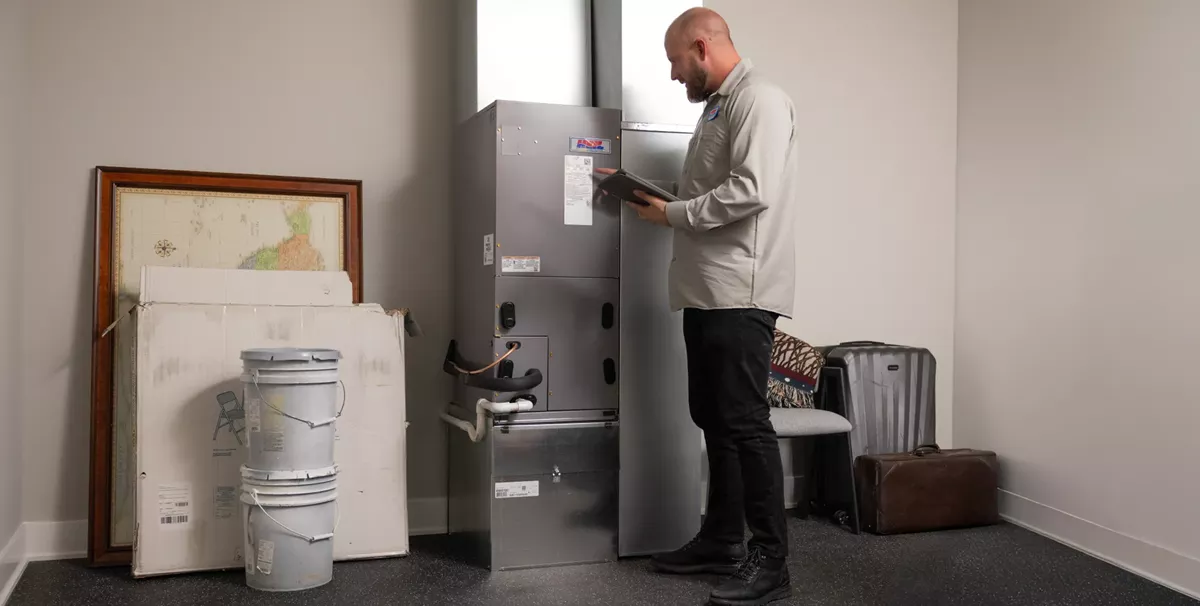
Step 4: Energy Efficiency
Efficiency is about more than saving money on your utility bill - it’s also about comfort and future-proofing your system.
-
Inverter Compressors: These modulate output instead of running at 100% or 0%. The result? Steadier indoor temps, fewer spikes in humidity, and less wasted energy.
-
ECM Blower Motors: Electronically Commutated Motors use less electricity than traditional PSC motors and adjust speed smoothly, improving airflow and lowering noise.
-
Refrigerants Matter: Old systems use R-410A, which is being phased down under U.S. law due to environmental impact. New models with low-GWP refrigerants like R-454B or R-32 are rolling out. Choosing them today avoids compatibility headaches later.
-
SEER2 + HSPF2 + AFUE: When comparing models, focus on these updated numbers. ENERGY STAR certification is a quick way to know you’re looking at top-tier efficiency, but always read the spec sheet - two models with the same sticker can perform differently in your climate.
Bottom line: An efficient system is quieter, more comfortable, and cheaper to run. Paying more up front often pays for itself in a few seasons.
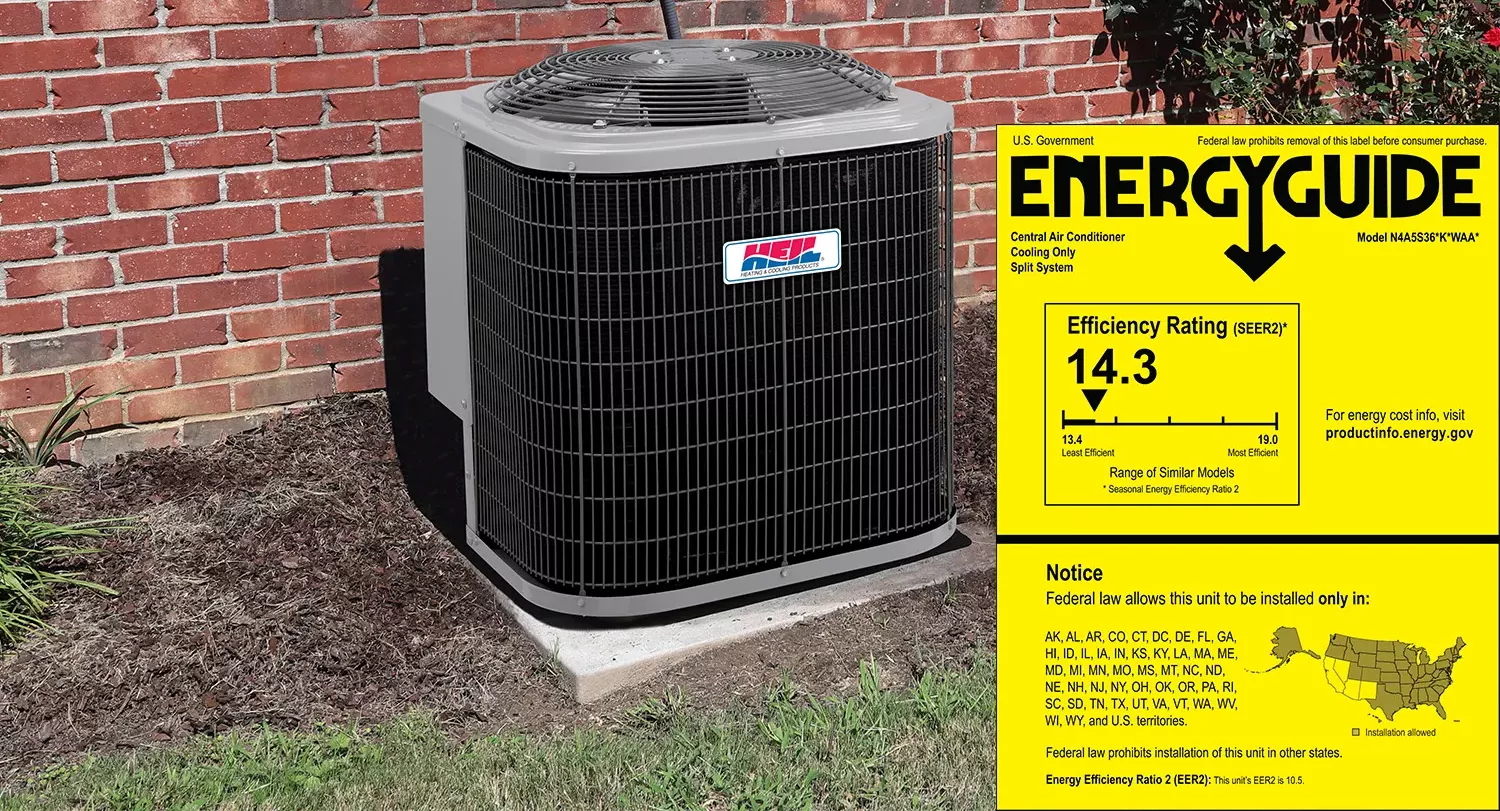
Step 5: Reliability & Durability
No one wants frequent breakdowns, especially in the middle of a heatwave or snowstorm. Reliability depends on both engineering quality and installation quality.
-
Build Quality: Look for all-aluminum coils (resist corrosion better than mixed copper/aluminum), powder-coated cabinets, and proven compressor platforms.
-
Diagnostics: Premium systems have onboard diagnostics that make troubleshooting easier and quicker - a plus for service techs and for your wallet.
-
Service Access: Tool-less panels, standardized parts, and easy access points all reduce downtime.
-
Quality Installation: Even the most robust unit will fail early if it’s poorly sized, charged, or ducted. Require a contractor who follows Manual J (sizing), Manual S (equipment selection), and Manual D (duct design), plus commissioning with measured refrigerant charge and airflow.
Bottom line: Reliability isn’t just about the logo on the unit - it’s about the combination of durable design and a correct, standards-based install.
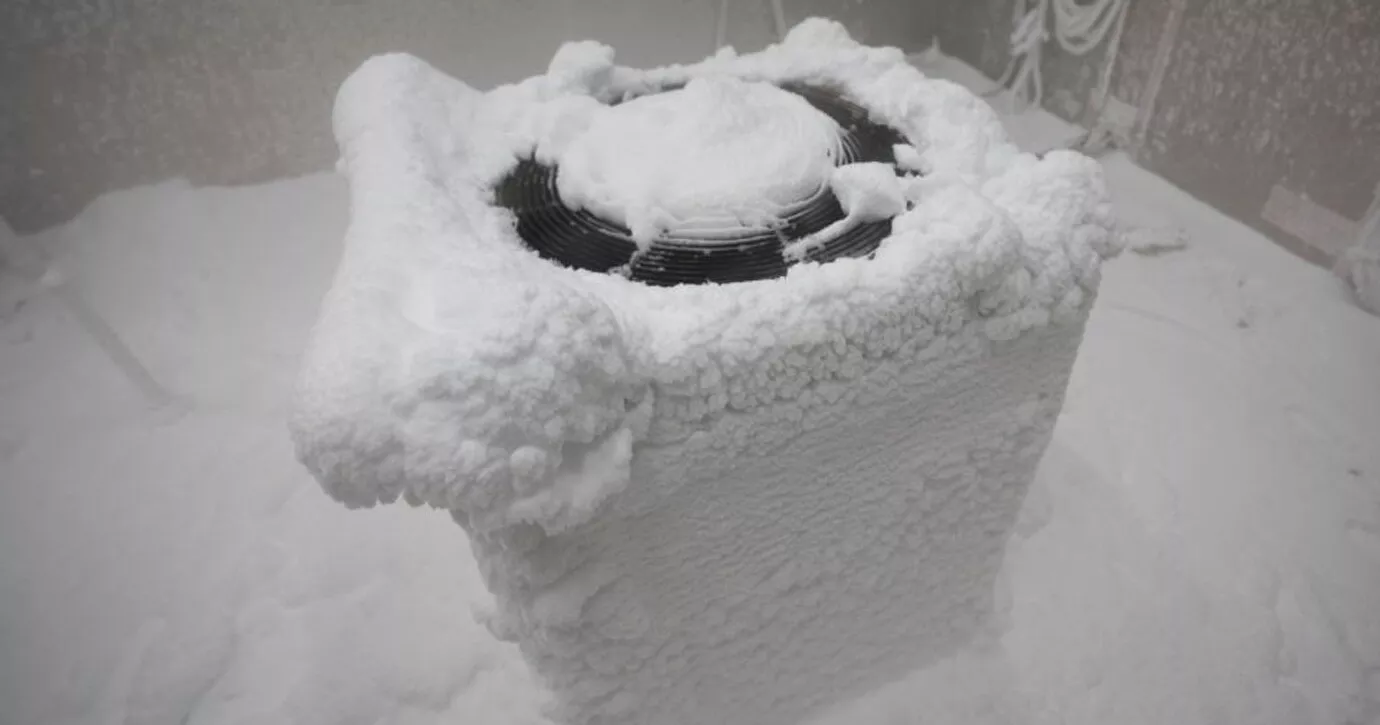
Step 6: Noise Levels
Comfort is not just about temperature; it’s also about sound.
-
Indoor Noise: Older single-stage blowers can sound like a jet engine. Modern ECM motors ramp up and down quietly, keeping sound levels closer to a whisper.
-
Outdoor Noise: Top inverter ACs and heat pumps now advertise outdoor sound as low as 51-55 dB - similar to a normal conversation. That’s a big difference compared to older 70+ dB units.
-
Design Factors: Compressor insulation, fan blade geometry, and variable-speed operation all cut noise. Brands usually highlight this on their spec sheets.
Bottom line: If your outdoor unit is near a bedroom or patio, noise levels can make or break your comfort. Always check the dB rating on the manufacturer’s own documentation.

Step 7: Smart Features & Connectivity
Today’s HVAC systems are not just mechanical boxes; they’re increasingly digital and connected. Smart features help squeeze more comfort out of less energy.
-
Smart Thermostats: From Carrier Infinity Touch to Trane ComfortLink II or Ecobee/Nest integrations, these devices learn your habits, adjust schedules, and even monitor humidity.
-
Communicating Systems: Inverter-driven systems often use a proprietary communicating thermostat that talks directly to the compressor and blower, allowing fine-grained adjustments instead of simple on/off commands.
-
Zoning: With multiple dampers and sensors, zoning lets you set different temperatures for different parts of the home. No more wasting energy heating the basement when you’re only upstairs.
-
Connectivity & Apps: Most major brands now offer Wi-Fi apps where you can adjust settings remotely, check filter reminders, or get fault alerts pushed to your phone.
-
OTA Updates: Some flagship systems even push software updates over the air, improving performance without new hardware.
Bottom line: Smart features aren’t just gimmicks-they maximize efficiency, reduce bills, and give you peace of mind by making your HVAC more transparent and controllable.

Step 8: Indoor Air-Quality Enhancements
Comfort is more than hot or cold air. It’s also about how clean, fresh, and healthy that air is.
-
Filtration: Aim for MERV-13 filters if your blower can handle it. These trap finer particles (allergens, dust, smoke) that standard MERV-8 filters miss. Some premium systems offer HEPA-grade filter cabinets.
-
UV-C & Ionization: UV lamps can help reduce microbial growth inside the coil. Bipolar ionization and plasma cleaners exist, but research carefully; some are more marketing than proven science.
-
Humidity Control: Whole-home dehumidifiers or humidifiers integrated with the air handler stabilize moisture. Too much humidity = mold and sticky summers. Too little = dry skin, cracked wood, and flu viruses spreading faster.
-
Ventilation: In tight, modern homes, ERVs (Energy Recovery Ventilators) or HRVs (Heat Recovery Ventilators) bring in fresh air without wasting energy. These are especially valuable if windows rarely open.
Bottom line: Indoor air quality features can be as impactful for your health as temperature. If you or family members have allergies, asthma, or respiratory issues, this is not an optional extra; it’s essential.
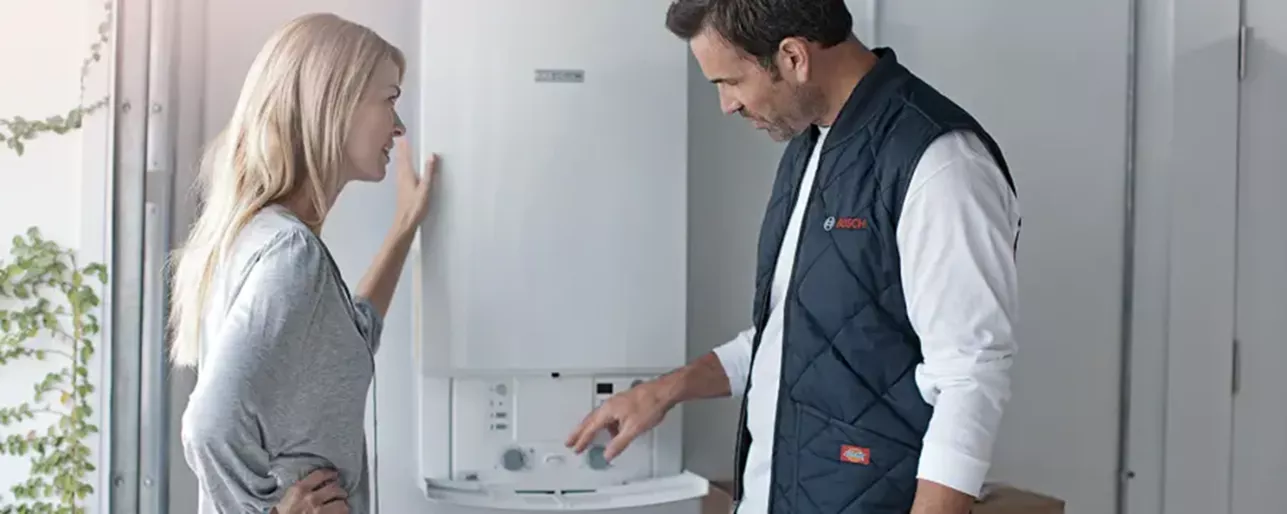
Step 9: Installation & Serviceability
Here’s the truth: half of system performance depends on installation. A “bad” install can turn the best system into a noisy, inefficient headache.
-
Proper Sizing (Manual J): Contractors must measure your home’s heat gain/loss, not just guess by square footage. Oversized = short cycles, humidity problems. Undersized = poor comfort in extremes.
-
Duct Design (Manual D): Leaky or undersized ducts rob efficiency. A 20% duct leak = 20% higher bills. Good design reduces static pressure, airflow noise, and hot/cold spots.
-
Commissioning: At startup, techs should measure refrigerant charge, airflow (CFM per ton), and static pressure. Skipping this is like buying a car without a test drive.
-
Serviceability: Units with tool-less panels, clear diagnostic codes, and common replacement parts make life easier for technicians and cheaper for you down the line.
Bottom line: A mediocre system installed by an excellent contractor will outperform a premium system installed badly. Always hire certified installers who follow industry standards (ACCA, ENERGY STAR Quality Installation).
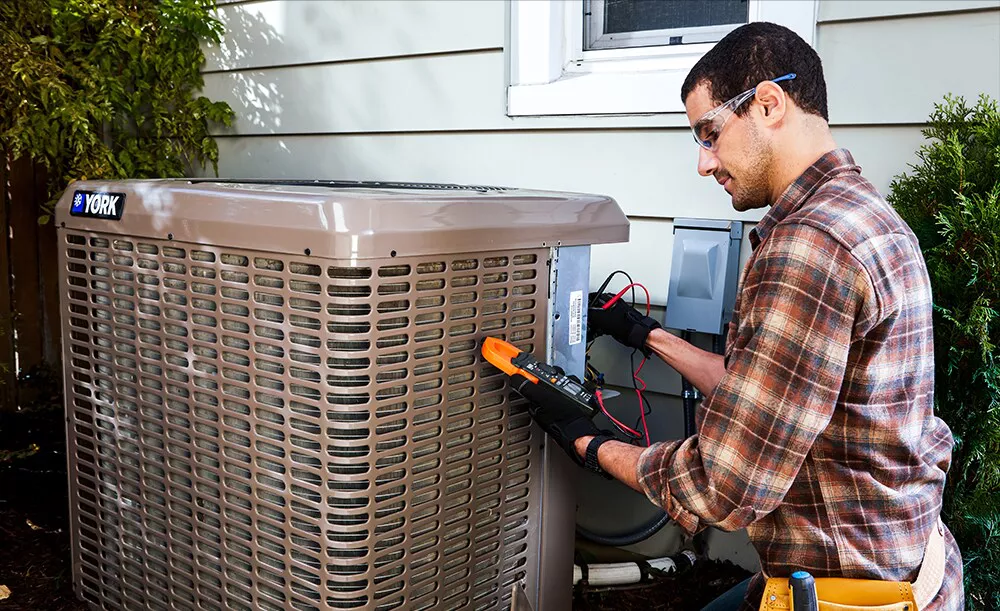
Step 10: Customer Support & Warranty
Your HVAC system isn’t just about what you buy; it’s about who stands behind it. Even the best unit will eventually need service, and a strong warranty plus a responsive dealer network can make the difference between a quick fix and weeks without comfort.
-
Warranty Terms: Look at coverage for the compressor (heat pumps/AC), heat exchanger (furnaces), and general parts. Many brands offer 10 years on parts, lifetime on heat exchangers, and up to 12 years on compressors for premium lines.
-
Labor Coverage: Parts may be free under warranty, but labor costs are not always included. Some brands or dealers offer optional labor protection plans.
-
Transferability: A transferable warranty adds resale value. If you sell your house, the next owner can inherit the coverage.
-
Dealer Network: Big brands like Carrier, Trane, Lennox, and Rheem have dense authorized networks. Smaller or newer brands may not, which can mean longer waits for parts or certified technicians.
Bottom line: Always read the fine print. A good warranty and strong support network protect your comfort and your wallet for the next 10–15 years.
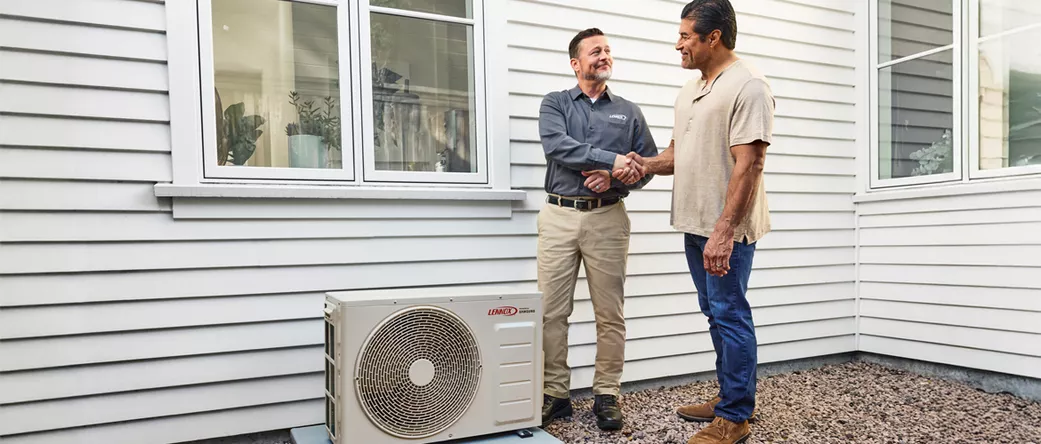
Step 11: Product Selection
HVAC systems generally come in three “tiers” across most major brands:
-
Entry-Level: Single-stage units. Affordable, reliable, but less efficient and louder.
-
Mid-Range: Two-stage or basic inverter units. More consistent comfort, quieter, and better efficiency.
-
Flagship: Full inverter variable-speed systems with advanced IAQ options, ultra-quiet performance, and top SEER2/HSPF2 ratings.
Some brands (like Carrier, Lennox, and Trane) organize these into named series (e.g., Infinity/Performance/Comfort or Signature/Elite/Merit). Others just offer a price-performance spread.
Bottom line: Pick the tier that matches your climate, comfort expectations, and how long you’ll stay in the home. For a forever home, flagship often pays back over time.
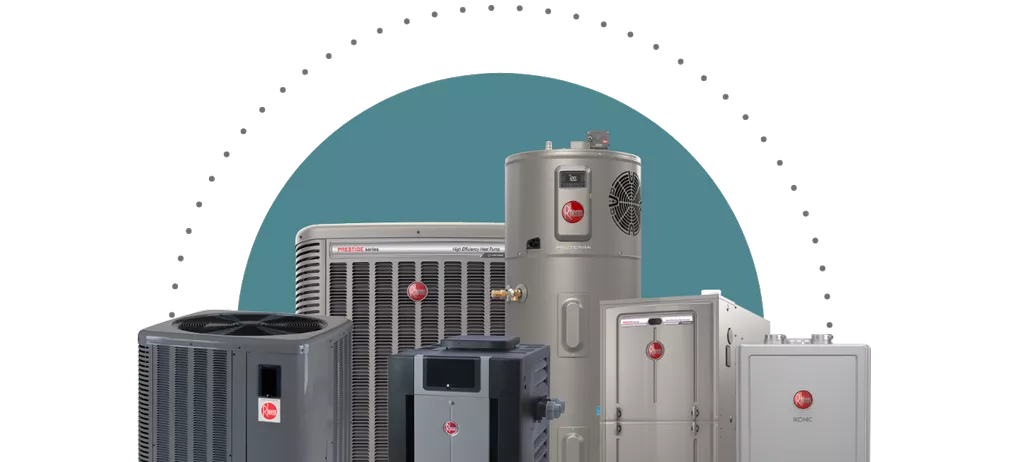
Step 12: Cost & Affordability
Installed HVAC cost isn’t just the unit-it’s the full package:
-
Unit Price: The furnace, AC, or heat pump itself.
-
Installation Costs: Labor, refrigerant line sets, pads, electrical upgrades, condensate management.
-
Ductwork: Old ducts may need sealing, resizing, or replacement-often a hidden cost.
-
Thermostats & Accessories: Smart controls, zoning dampers, IAQ add-ons.
-
Rebates & Incentives: High-efficiency heat pumps and AC units often qualify for federal tax credits, state rebates, and utility incentives. These can cut thousands off your net cost.
-
Financing Options: Many dealers offer payment plans to spread out the investment.
Bottom line: Always compare the net installed cost after incentives, not just sticker price. Sometimes the higher-efficiency model pays for itself once rebates and energy savings are factored in.
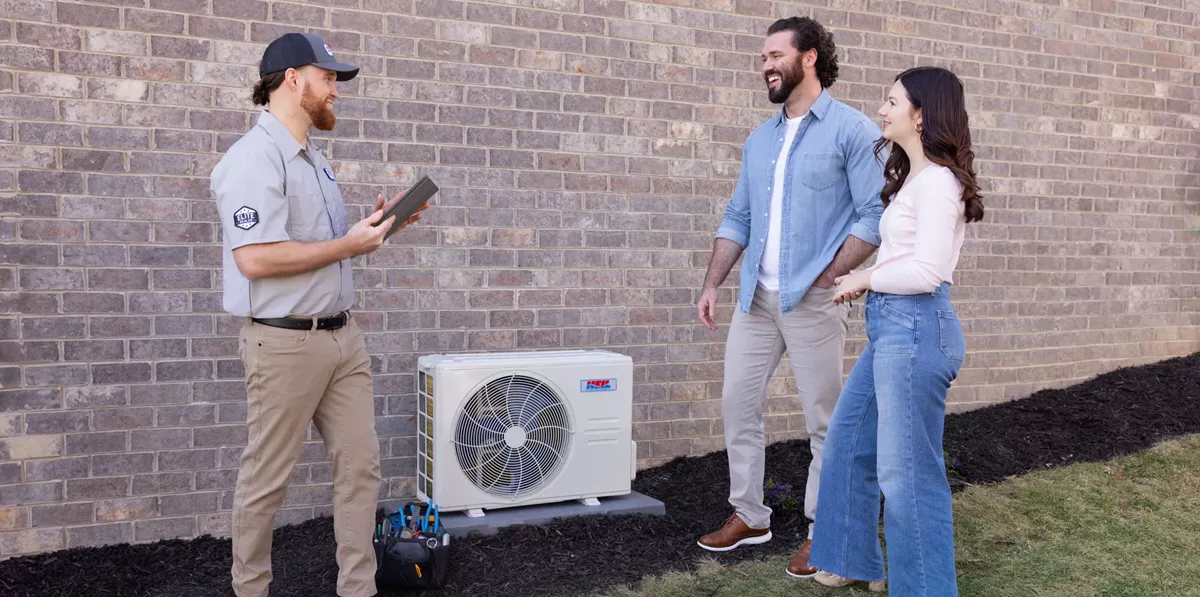
Final Pre-Purchase Checklist
Before you sign a contract, confirm these boxes are checked:
✅ System type fits your climate and energy costs (Furnace+AC vs. Heat Pump vs. Dual-Fuel).
✅ Manual J/S/D reports provided by your contractor (sizing, selection, duct design).
✅ SEER2/EER2/HSPF2/AFUE values verified from the manufacturer’s official spec sheets.
✅ Noise levels listed (aim for mid-50s dB outdoors or quieter).
✅ IAQ options chosen (MERV-13, humidity control, ERV/HRV if needed).
✅ Commissioning report promised at startup (charge, airflow, static pressure).
✅ Warranty terms clear (compressor/heat exchanger/parts + labor options).
✅ Rebates/credits factored into the final quote.
Quick Buyer Match Guide
-
Cold climates with cheap gas: Go with a high-AFUE furnace + central AC.
-
Mild or moderate climates with high energy prices: Choose a heat pump for all-electric efficiency.
-
Cold climates with expensive gas but deep freezes: A dual-fuel system gives you the best of both worlds.
-
Noise-sensitive households: Invest in a variable-speed inverter system with outdoor sound ratings ≤ 55 dB.
-
Health-focused families: Prioritize IAQ upgrades-MERV-13 filters, humidity control, and ERV/HRV ventilation.
-
Budget-conscious buyers: Mid-range two-stage systems hit the sweet spot of affordability, comfort, and efficiency.
Final Thoughts
Buying HVAC is not just about the shiniest brochure numbers. It’s about fit: fit to your home, your climate, your budget, and your comfort priorities. By breaking the decision into these 11 aspects, you can see through marketing gloss and focus on what truly matters: steady comfort, clean air, low bills, and a system that lasts.
A good HVAC system becomes invisible-you forget it’s there because your home just feels right. And that’s the ultimate test of success.
KEEP READING


